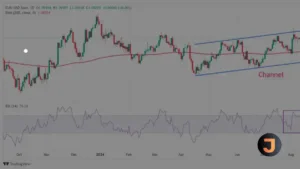The IRS tax compliance costs the US economy a staggering $546 billion annually, a figure that underscores the significant burden placed on both individuals and businesses. This amount is not just a reflection of the taxes paid but also includes the time and money spent on complying with the complex tax code.
Measuring Taxpayer’s Compliance Burden
The Paperwork Reduction Act of 1980 mandates the IRS to estimate the time and out-of-pocket costs taxpayers incur to complete tax forms. Over the decades, the IRS has refined its methods to provide more accurate estimates, considering changes in the economy, taxpayer demographics, and filing methods.
According to the IRS, taxpayer compliance burden encompasses both time-related activities—such as recordkeeping, tax planning, and completing returns—and out-of-pocket expenses like tax software, third-party preparers, and postage. These compliance costs do not include the actual tax liability or any economic inefficiencies resulting from sub-optimal tax decisions.
In 2024, Americans are projected to spend 7.9 billion hours on tax compliance activities. This equates to approximately $413 billion in lost productivity, based on hourly wage estimates from the Bureau of Labor Statistics. Additionally, out-of-pocket costs are expected to reach $133 billion, bringing the total compliance cost to $546 billion, nearly 2 percent of the GDP.
The Price of Our Time Totals Nearly $413 Billion Annually
The opportunity cost of complying with the tax code is immense. Every hour spent on tax forms is an hour not spent with family or growing a business. For individual income tax forms, an hourly compensation cost of $44.50 is used, combining average wages and benefits. For more complex business-related returns, the cost rises to $56.67 per hour.
In dollar terms, the 7.9 billion hours required for tax compliance translate to $412.8 billion in lost productivity annually. Adding the $133.3 billion in out-of-pocket costs brings the total burden to American taxpayers to a staggering $546.1 billion.
Much of the Tax Burden Falls on Businesses
Businesses bear a significant portion of this compliance burden. The IRS estimates that over half of individual income tax compliance costs are associated with reporting and substantiating income, much of which falls on businesses issuing documents like W-2 and 1099-INT forms.
The compliance cost for business income tax returns alone is nearly $119 billion. Quarterly tax filings add another $44.7 billion, while depreciation schedules cost $25 billion. Pass-through businesses face additional burdens, with compliance costs for qualified business income deductions exceeding $19 billion annually.
New Requirements for Cryptocurrency Transactions Added 1.4 Billion Hours
The Infrastructure Investment and Jobs Act (IIJA) introduced new reporting rules for cryptocurrency transactions, significantly increasing compliance costs. Form 1099-B, used for reporting capital gains and losses from individual transactions, now requires nearly 2.2 billion hours to complete, costing taxpayers almost $123.7 billion.
These provisions were expected to raise about $28 billion in new tax revenues over a decade, a fraction of the compliance cost imposed by the IIJA.
The IRS is the Primary Source of Regulatory Costs in America
Taxpayer compliance now comprises 66 percent of the 12 billion total hours Americans spend on federal paperwork and 72 percent of the $184 billion in government-wide out-of-pocket regulatory costs. Despite technological advancements in tax preparation and filing, the complexity of tax laws continues to impose extraordinary burdens on taxpayers.






